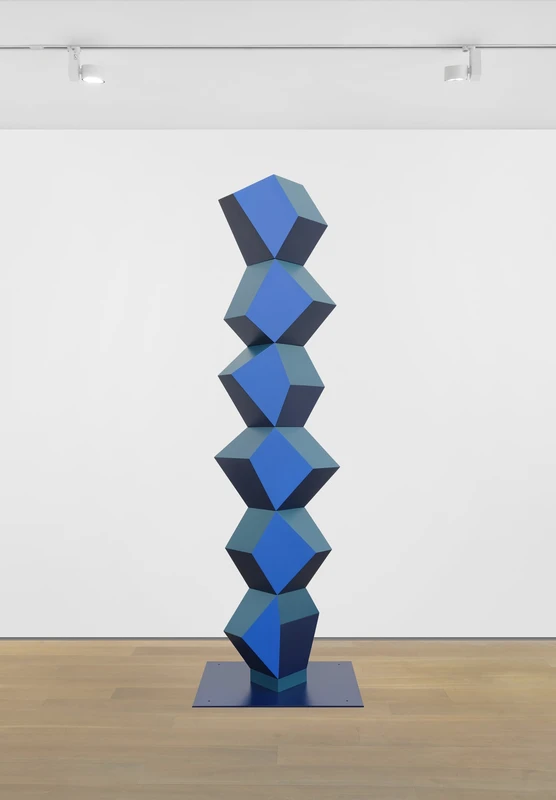Angela Bulloch


b. 1966, Canada
Canadian installation artist and sculptor, born 1966, active in Great Britain.
The work of Angela Bulloch (b. 1966, Rainy River, Canada) spans many forms, all of which manifest a fascination with systems, patterns and rules, and the creative territory between mathematics and aesthetics. Since graduating from Goldsmiths College in 1988 as part of the ‘freeze’ generation of young British artists, her work has crystallised into a number of distinct but related strands. The ‘pixel boxes’ have become her most familiar component: initially fabricated in beech wood with a plastic front screen, their softly changing and pulsing colours distil and abstract complex visual patterns into simple shifting monochromes. These works became the signature of a conceptual practice that avoided the shock strategies of many of her contemporaries. More recently, fabricated in copper, aluminium or corian they pay closer homage to their minimalist heritage, while the colours they channel are freed from their earlier origins to become pure abstractions.
Alongside the pixel box sculptures, Bulloch has also returned to the ‘Drawing Machines’ she made early in her career. They operate a simple conceit: a machine draws vertical or horizontal lines on the gallery wall according to some external stimulus – noises made by visitors to the exhibition, or the rhythm of their sitting on and standing from a bench placed facing the work. But this simplicity belies the rich and complex way in which the Drawing Machines bring together modernist concerns of the grid, the monochrome, and the colour field with a playful engagement with interactivity. In a third strand, Bulloch has created electronic simulations of the night sky, which have been exhibited in both large-scale public installations and smaller domestic panels. She selects an area of the sky based upon the primary constellations of the stars it contains and then extrapolates the viewpoint to a location far from the earth, to create a representation of real space, but as her viewers could never see it.
In her most recent body of work, ‘Stacks’, each vertical structure of three to six stacked rhomboids offers a distinct rhythm created by variations in shape, size, and colour. The powder coated steel surfaces are painted in a combination of light and dark colours, creating the optical illusion of pushing and pulling planes. Designed within a digital imaging program, each stacked rhombus appears distinct while at the same time relating to the others.